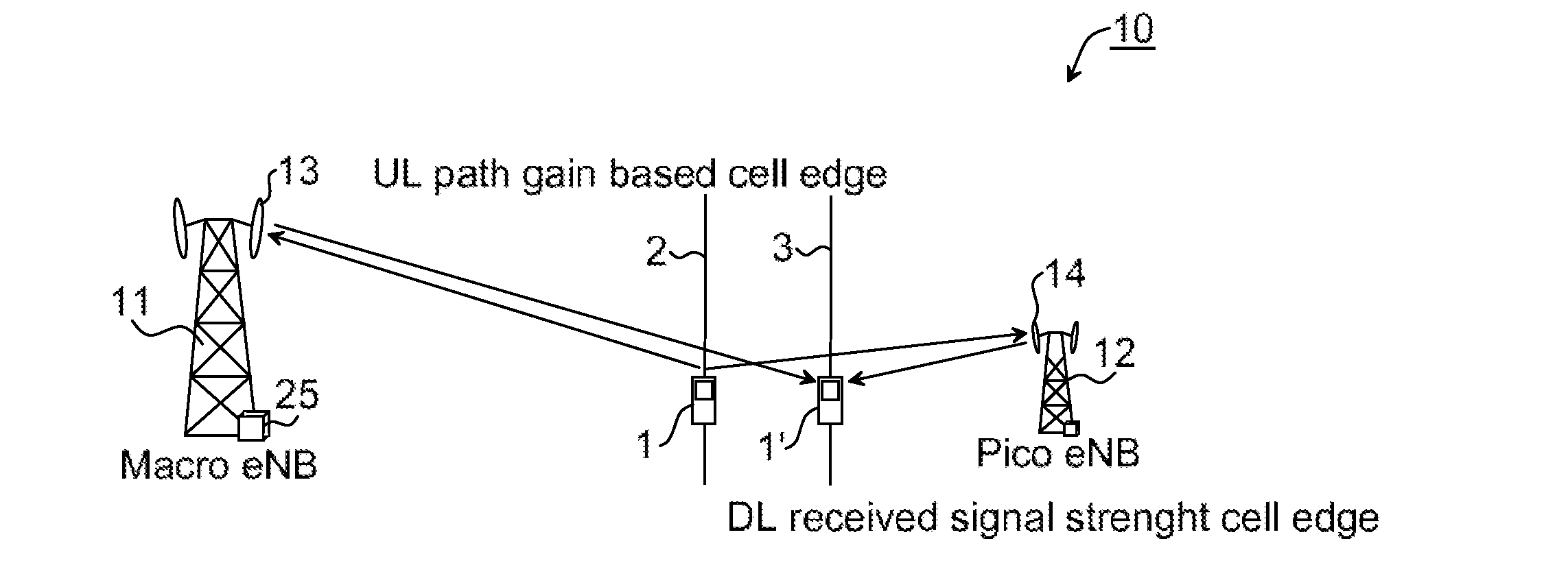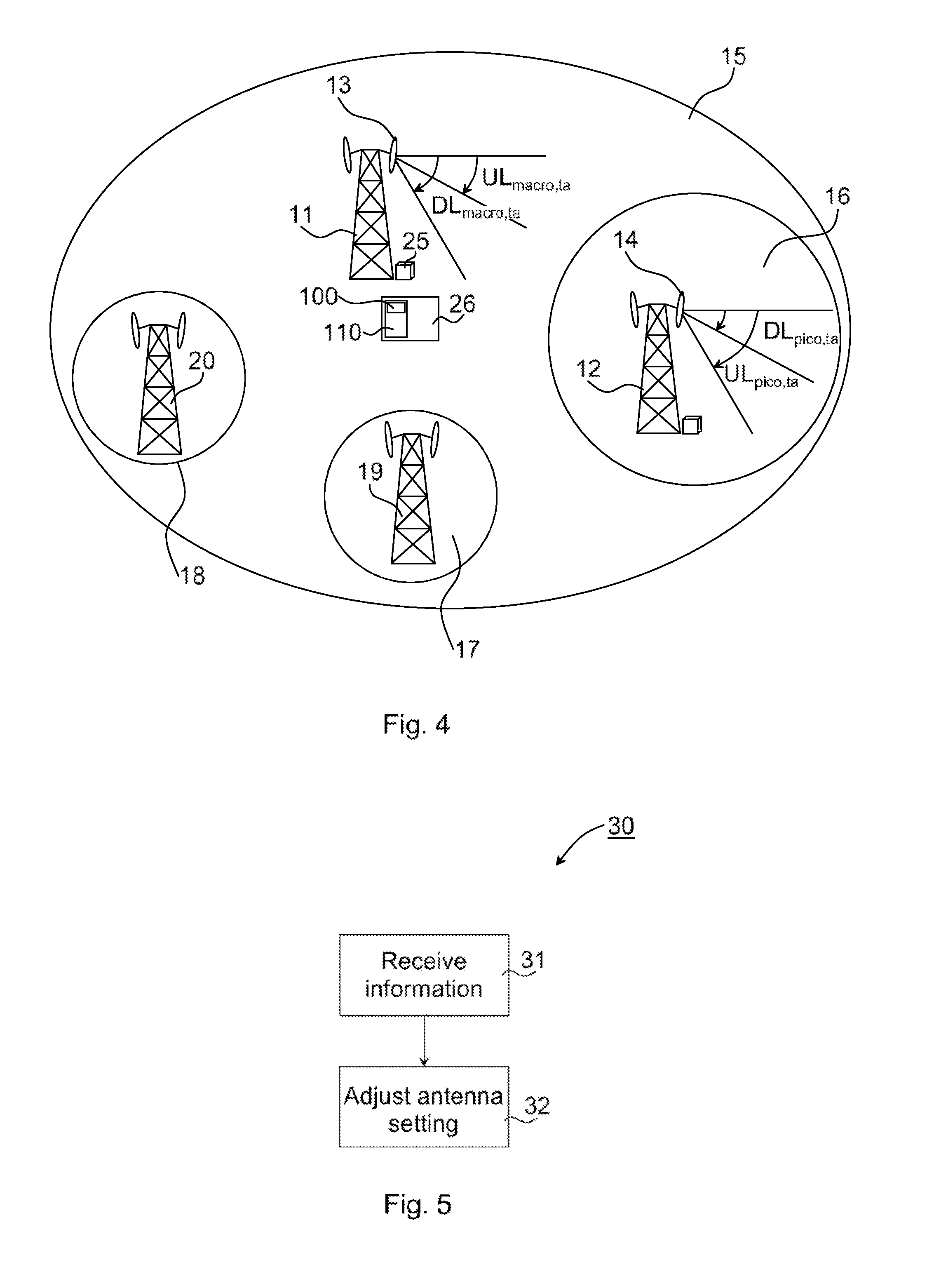Methods for cell selection balancing, computer programs and computer program products
a cell selection and cell technology, applied in the field of cell selection balancing in cellular wireless communication systems, can solve the problems of generating high interference to the uplink reception of low-power base stations, reducing transmission opportunities, and reducing transmission opportunities. the effect of the quality of the received control information
- Summary
- Abstract
- Description
- Claims
- Application Information
AI Technical Summary
Benefits of technology
Problems solved by technology
Method used
Image
Examples
Embodiment Construction
[0033]With reference again to FIG. 1, a wireless communication system 10, in which the present invention may be implemented, is illustrated. The wireless communication system 10 may comprise any number of base stations; in the figure a first base station 11 and a second base station 12 are illustrated. It is noted that the term base station is used throughout the description, and intended to encompass different types of base stations irrespective of type of cellular communication system. For example, in LTE (Long term evolution), the base station is denoted evolved Node B (eNB).
[0034]The first base station 11 comprises at least one antenna 13, which is part of an antenna system, typically comprising a number of antennas and an antenna control part. The antenna control part is schematically illustrated at reference numeral 25. Likewise, the second base station 12 comprises an antenna system in turn comprising at least one antenna 14 and an antenna control part. The wireless communica...
PUM
 Login to View More
Login to View More Abstract
Description
Claims
Application Information
 Login to View More
Login to View More - R&D
- Intellectual Property
- Life Sciences
- Materials
- Tech Scout
- Unparalleled Data Quality
- Higher Quality Content
- 60% Fewer Hallucinations
Browse by: Latest US Patents, China's latest patents, Technical Efficacy Thesaurus, Application Domain, Technology Topic, Popular Technical Reports.
© 2025 PatSnap. All rights reserved.Legal|Privacy policy|Modern Slavery Act Transparency Statement|Sitemap|About US| Contact US: help@patsnap.com



